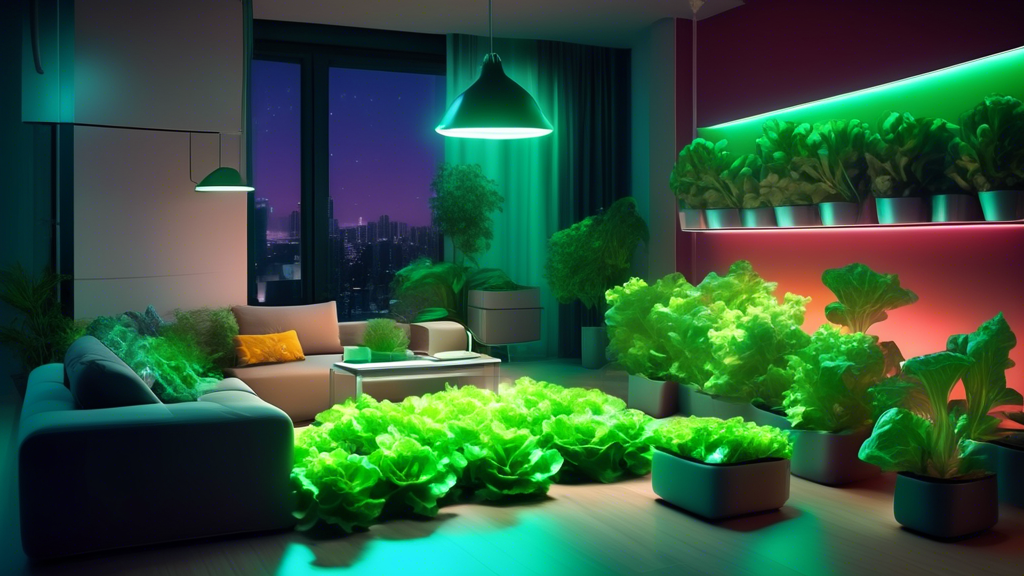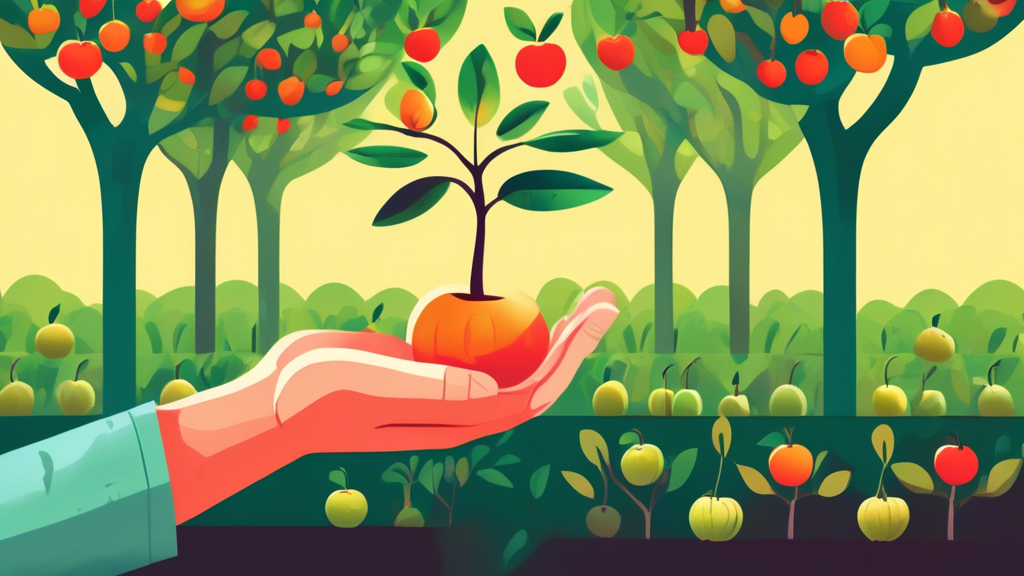
What is Indoor Hydroponics? A Beginner’s Guide
The Core Concept: Growing Plants Without Soil
Indoor hydroponics is the method of cultivating plants in a water-based, nutrient-rich solution, completely eliminating the need for soil. Instead, an inert growing medium—such as clay pebbles, rockwool, or coco coir—is often used to provide physical support for the plant’s root system. The roots have direct access to oxygen, water, and all the essential minerals they need to thrive. This direct delivery system is the fundamental principle that allows for faster growth rates and higher yields compared to traditional soil gardening.
Why Indoor Hydroponics is the Ultimate Solution for Modern Living
For city dwellers, renters, or anyone with limited outdoor space, indoor hydroponics is a game-changer. It transforms balconies, spare rooms, and even a corner of your kitchen into a productive, year-round garden. It offers unparalleled control over the growing environment, leading to healthier plants and a more reliable harvest, independent of outdoor weather conditions or soil quality.
Overcoming Common Gardening Challenges
“I Don’t Have a Yard or Outdoor Space”
Space is no longer a barrier to gardening. Indoor hydroponic systems are designed to be space-efficient. You can utilize vertical space with tiered or tower systems, place a compact kit on a windowsill, or tuck a low-profile system into an unused corner. The key is to match the system’s footprint to your available area, proving that you don’t need a backyard to be a successful gardener.
“I’m Tired of Unpredictable Weather and Seasons”
Say goodbye to frosts, droughts, and scorching heat waves. An indoor hydroponic garden creates a perfectly controlled microclimate. By managing light, temperature, and nutrients, you can grow crisp lettuce in the dead of winter and fresh basil all year round, making the calendar irrelevant to your harvest schedule.
“My Plants Keep Dying from Pests and Diseases”
Since soil is the primary harbor for many pests, fungi, and soil-borne diseases, removing it from the equation drastically reduces these risks. A well-maintained indoor hydroponic system is a clean and controlled environment, meaning you’ll spend less time battling bugs and blight and more time enjoying your thriving plants.
“I Want Faster Growth and Bigger Yields”
Plants in a hydroponic system don’t have to expend energy searching for nutrients. With everything they need delivered directly to their roots, they can redirect that energy into vigorous growth and fruit production. It’s not uncommon to see plants grow up to 50% faster and produce significantly larger yields than their soil-grown counterparts.
Choosing Your First Indoor Hydroponic System: A Comparison
Simple & Beginner-Friendly Systems
Deep Water Culture (DWC): Often the easiest entry point. Plants are suspended in a net pot with their roots dangling directly into a nutrient-rich, oxygenated water solution. It’s simple to build and manage.
Wick Systems: The most passive and low-maintenance system. It uses a wick to draw nutrient solution from a reservoir up to the plant’s root zone. Excellent for small, non-fruiting plants like herbs and lettuce.
Intermediate Systems for Serious Hobbyists
Nutrient Film Technique (NFT): A shallow stream of nutrient solution constantly flows over the bottom of the plant roots, which are held in a sloping channel. Highly efficient for growing leafy greens.
Ebb and Flow (Flood & Drain): A versatile system where the grow tray is periodically flooded with nutrient solution and then allowed to drain back into the reservoir. This cycle hydrates the roots and provides them with oxygen.
System Comparison Guide
| System Type | Cost | Complexity | Best For | Maintenance Level |
|---|---|---|---|---|
| Wick | Low | Very Low | Herbs, Lettuce, Microgreens | Low |
| Deep Water Culture (DWC) | Low | Low | Lettuce, Basil, Kale | Medium |
| Nutrient Film Technique (NFT) | Medium | Medium | Leafy Greens, Herbs | Medium |
| Ebb and Flow | Medium-High | Medium | Peppers, Tomatoes, Beans | Medium |
Setting Up Your First Indoor Hydroponics Garden
The Essential Shopping List: From Lights to Nutrients
- System Kit or Components: Reservoir, grow tray, net pots, air pump (for active systems like DWC).
- Growing Medium: Clay pebbles, rockwool cubes, or coco coir.
- Lighting: Full-spectrum LED grow lights are the most efficient and coolest-running option for indoors.
- Nutrients: A balanced, water-soluble hydroponic nutrient solution (look for a two-part or three-part formula).
- pH & EC Meters: Crucial for monitoring nutrient strength and acidity/alkalinity.
- Seeds or Seedlings: Start with easy, recommended plants.
A Step-by-Step Guide to Assembling a Deep Water Culture (DWC) System
- Prepare the Reservoir: Use a light-proof container (or paint a clear one black) to prevent algae growth. Drill holes in the lid for your net pots.
- Install the Air Pump: Place the air stone inside the reservoir and connect it to the air pump outside the reservoir. This oxygenates the water.
- Mix Nutrients: Fill the reservoir with water and add your hydroponic nutrients according to the product’s instructions for the seedling stage.
- Check and Adjust pH: Use your pH meter and adjustment solutions to bring the water to the ideal range for your plants (typically 5.5-6.5).
- Plant Your Seedlings: Place a seedling (supported by a rockwool cube or similar) into a net pot and surround it with your growing medium. The bottom of the roots should gently touch the nutrient solution.
- Turn On the Lights and Air Pump: Position your grow light about 12-18 inches above the plants and set a timer for 14-16 hours of light per day. Ensure the air pump runs continuously.
Unique Insight: The Secret to Flavor You Never Knew
How You Can Manipulate Nutrient Formulas to Enhance Taste
Here’s a secret that even many experienced gardeners don’t know: you can actively “program” the flavor profile of your hydroponic harvest. Unlike soil, where nutrients are locked up and released slowly, hydroponics gives you precise control. In the final 1-2 weeks before harvest, you can intentionally alter the nutrient solution to concentrate flavors. For example, slightly reducing nitrogen and increasing potassium and sulfur for tomatoes can enhance their sweetness and complexity. For herbs like basil, a mild, controlled “stress” by slightly lowering the water level can trigger the plant to produce more essential oils, resulting in a more potent and aromatic flavor than you’d typically get from soil-grown plants. This technique allows you to grow a strawberry that’s sweeter or a basil leaf that’s more pungent, all by fine-tuning your nutrient recipe.
Top Plants to Grow in Your Indoor Hydroponic System
The Easiest to Start With: Lettuce, Herbs, and Spinach
These plants are forgiving, have short grow cycles, and thrive in a variety of hydroponic systems. They don’t require intense light or complex nutrient schedules, making them perfect for building your confidence.
A Step Up: Strawberries, Peppers, and Tomatoes
Once you’ve mastered the basics, these fruiting plants are excellent candidates. They require more light (especially tomatoes and peppers) and may need additional support like trellising, but the reward of home-grown, off-season strawberries or peppers is well worth the effort.
Frequently Asked Questions (FAQs) About Indoor Hydroponics
Is an indoor hydroponics system expensive to run?
The ongoing costs are generally low. The main consumers of electricity are the grow lights and air pump. Modern LED lights are very energy-efficient. Your primary recurring cost will be nutrient solution, which is used sparingly.
Do I need special lights, or is a sunny window enough?
While a very sunny, south-facing window can work for some leafy greens, it is rarely sufficient for robust growth or for fruiting plants. Specialized full-spectrum grow lights are recommended to provide the consistent, intense light that plants need for photosynthesis, especially during shorter winter days.
How often do I need to change the water and nutrients?
A good rule of thumb is to completely change the nutrient solution every two to three weeks. However, you should top off the reservoir with fresh water as it evaporates and check the nutrient strength (EC/PPM) and pH levels at least once a week, making adjustments as needed.
What are the most common mistakes beginners make?
- Overcomplicating the Start: Starting with an advanced system or difficult plants.
- Ignoring pH and EC: This is the most critical aspect of management.
- Overcrowding Plants: Giving plants insufficient space leads to poor air circulation and competition for light.
- Using the Wrong Light: Using a regular household bulb instead of a proper grow light.
Can I grow root vegetables like carrots or potatoes hydroponically?
While it is possible, it is more challenging. Root vegetables require a deep, solid medium to support their growth and develop their proper shape. Specialized systems or deep media beds are needed, making them less ideal for a beginner’s first project compared to leafy greens or herbs.
Conclusion: Your Journey to a Soilless Garden Starts Now
Embarking on the journey of Indoor Hydroponics: Creating a Soilless Garden in Any Space is an empowering step toward self-sufficiency and fresh, home-grown food. It solves the classic dilemmas of space, climate, and pests, offering a clean, efficient, and highly rewarding way to garden. You now have the knowledge to choose a system, understand the core principles, and even manipulate flavors to your liking. There has never been a better time to start. Your soilless garden awaits.






